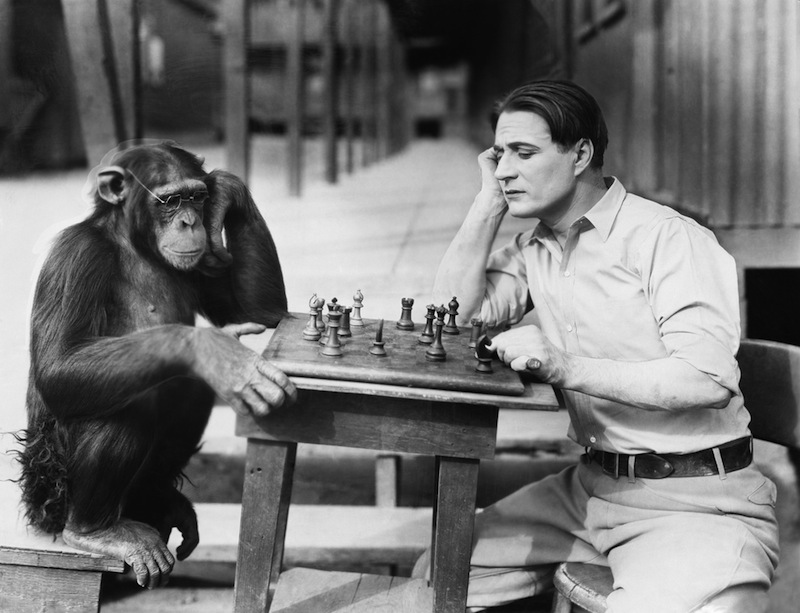Chimps Can Spot Faces Like Humans Do

Chimpanzees can quickly identify the faces of other chimps, as well as those of human adults and babies. These new findings could shed light on human and chimp evolution, scientists say.
Faces are key to human social lives, conveying key data about how one feels. As such, humans are wired to pay special attention to faces. For example, when pictures of faces are mixed in with pictures of other items such as cars and houses, people can detect the faces effortlessly.
Prior research has also shown that humans see faces differently from how they see other objects; for instance, facial recognition is severely hampered when people are shown upside-down faces, or when an image of a face is modified so that the nose and mouth are located beneath the eyes. These past findings suggest that the human brain analyzes faces in a holistic manner — that is, it understands images of faces by looking at the whole.
Increasingly, scientists find that chimps, humanity's closest living relatives, also see faces differently than they do other items. To learn more about the chimp response to faces, scientists first trained three adult chimpanzees named Chloe, Pendesa and Ai to find pictures of a chimp face, a banana, a car and a house among groups of other images on a touch screen. [See Photos of Unique Chimpanzee Faces]
The researchers found that the apes recognized the chimp face very efficiently. "Chimpanzees very quickly find a face in the pile of various objects," said study lead author Masaki Tomonaga, a primatologist and comparative cognitive scientist at Kyoto University's Primate Research Institute in Japan.
However, the chimps' ability to detect a chimp face was significantly hampered when the face was upside down. This suggests that chimps may analyze faces holistically, like humans do.
In subsequent experiments, the scientists also found that the chimpanzees efficiently detected the faces of human adults and babies, but were unable to identify monkey faces. The researchers suggest this gap may result from long-lasting social experiences between chimps and humans. Faces seen from the front were more easily detected than faces seen from the side, suggesting that eye-to-eye contact is important for chimps, just as it is in humans.
Get the world’s most fascinating discoveries delivered straight to your inbox.
"Both humans and chimpanzees have developed a specialized ability for face processing," Tomonaga said. "This implies that the face plays a very important social role in both species. These results are quite suggestive when considering the evolution of social intelligence. Both species may use facial information for their social lives in the same manner."
Chimpanzees also detected a photo of a banana as efficiently as that of a face. However, further examination showed that the quick ID of the fruit had to do with its distinctive yellow color. When a black-and-white image of a banana was shown, the chimps took significantly longer to spot the fruit, while no such problem was seen with black-and-white versions of faces.
Future research could explore how well other primates detect faces and at what age chimps learn to quickly detect faces. "How and when do chimpanzee babies acquire such abilities?" Tomonaga asked.
Tomonaga and his colleague Tomoko Imura at Niigata University of International and Information Studies in Japan detailed their findings online today (July 16) in the journal Scientific Reports.
Follow us @livescience, Facebook & Google+. Original article on Live Science.

 Live Science Plus
Live Science Plus






